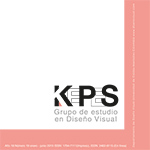Authors
Abstract
2D videos and their traditional audiovisual narrative are being modified with the introduction of spherical videos which allow modifying the point of view of the viewer and the way in which he interacts with this media. Under a research process in forums and websites on the internet, there is a shortage of theoretical and bibliographic resources regarding methodologies of creation and production of 360- degree videos, in addition to missing the basic models and structures of pre-production such as the staging and framing templates. The need to develop content in a professional environment is posed with a narrative shooting plans and structures with a narrative according to an audiovisual production.
This article presents a technical template proposal for 360-degree pre-production drawing of people in action, aimed at graphic script specialists and directors in order to unify concepts and structures that serve as the basis to develop 360-degree videos focused on the image of staging, in image and framing.
For the approach of the template a qualitative methodology model of experiences and an inductive framework of analytical research and observation work was used. The conclusions of this article open the possibilities for the realization of a drawing template that provides a correct visual disposition of objects, characters or events present in a 360-degree visual or cinematographic production.
References
Arenas, J.G. e Infante, C.B. (1994). Geometría y experiencias. Madrid, España: Alhambra Pearson Longman.
Bartolomé, A. (2003). Vídeo digital. Revista Científica Iberoamericana de Comunicación y Educación, 21, 39-47.
Blein, J. (2017). Test de altura de cámara para Realidad Virtual (vídeo 360). Recuperado de https://www.youtube.com/watch?v=rfGGKIWgibY.
Corbillon, X. et al. (2017). Viewport-adaptive navigable 360-degree video delivery. IEEE International Conference on Communications. Recuperado de https://ieeexplore.ieee.org/document/7996611.
Gallardo, C.J. y de las Heras, E. (2015). El vídeo esférico en Youtube y su influencia en el contenido audiovisual. Revista Opción, 31 (4), 466-480.
Gordo, J.A. (2016). Vídeo interactivo en realidad virtual inmersiva. Barcelona, España: Universidad Politécnica de Cataluña.
Henrikson, R. et al. (2016). Multi-device storyboards for cinematic narratives in VR. En Proceedings of the 29th Annual Symposium on User Interface Software and Technology, ACM, New York, USA.
Huhtamo, E. (2013). Panoramas as simulated vehi es Paris Universal Exposition of historian aikakone essa en Journal of Visual Culture, New York, USA
Kamppari, S. (2016). VR Sketch Sheets. Recuperado de https://blog.prototypr.io/vr-sketch-sheets-4843fd690c91.
Kurbatov, V. (2017). Draw Sketches for Virtual Reality Like a Pro. Recuperado de https://virtualrealitypop.com/vr-sketches-56599f99b357.
Lee, H., Tateyama, Y. and Ogi, T. (2011). Image-based stereo background modeling for CAVE system. IEEE International Symposium on VR Innovation. Recuperado de https://ieeexplore.ieee.org/abstract/document/5759646.
LUCERNA. (Sin fecha). Stereopticon Cyclorama (panoramic projection system, maker unknown, 1890s). Recuperado de https://www.slides.uni-trier.de/hardware/index.php?id=2000128.
Marfil Carmona, R. (2017). 3D, 360 grados y periodismo inmersivo. La influencia de la innovación tecnológica en la representación documental y el lenguaje audiovisual. Revista Cine, Imagen, Ciencia, 1 (1), 195-214.
McCurley, V. (2016). Storyboarding in Virtual Reality. Recuperado de https:// virtualrealitypop.com/storyboarding-in-virtual-reality-67d3438a2fb1.
Parente, A. (2011). La forma cine: variaciones y rupturas. Arkadin, 3, 41-58.
Ramírez, E. y Patow, G. (2014). Cubemaps alineados al observador. En III Simposio Científico y Tecnológico en Computación, Universidad Central de Venezueal, Caracas, Venezuela.
realovirtual.co. (2017). Lo que sabemos de Oculus Rift Crescent Bay. Recuperado de https://www.realovirtual.com/noticias/949/que-sabemosoculus-rift-crescent-bay.
Rondao, A., Macq, J.F. and Verzijp, N. (2012). Interactive Omnidirectional Video Delivery: A Banwidth-Effective Approach. Bell Labs Technical Journal, 16 (4), 135-147.
Szeliski, R. (2006). Image alignment and stitching: a tutorial. Foundations and Trends. Computer Graphics and Vision, 2 (1), 1-104.

 pdf (Español (España))
pdf (Español (España))
 FLIP
FLIP






















